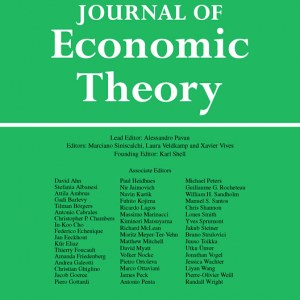

Peter Wakker
Biography
Peter Wakker is professor of decision under uncertainty at Behavioral Economics of the Erasmus School of Economics. He works in behavioral economics and on risk/ambiguity. He has published in leading journals in economics, business, medicine, psychology, statistics, and mathematics. He was the best-publishing Dutch economist in 1994, 1998, 2003, and 2007, and collaborated with three Nobel-prize winners.
Wakker received a Medical Decision Making Career Achievement Award (2007), the Frank P. Ramsey Medal (2013; highest award of INFORMS Decision Analysis Society), and an Honorary doctorate in economics (University of St. Gallen 2016).
Key publications

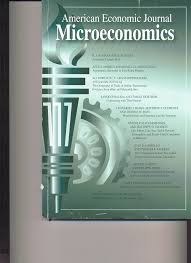
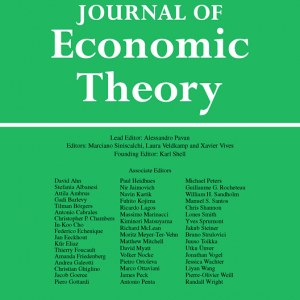
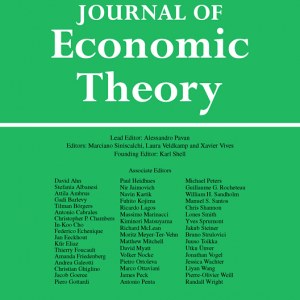
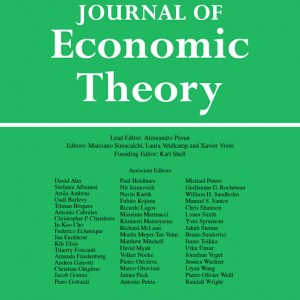
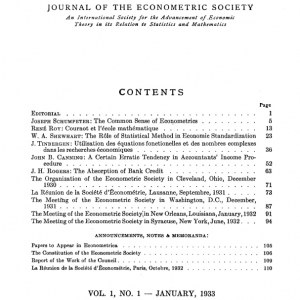
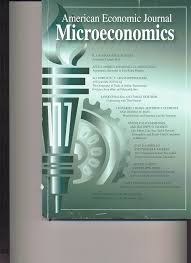
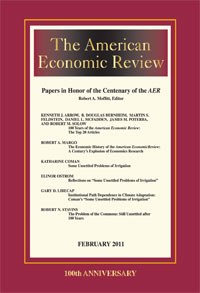
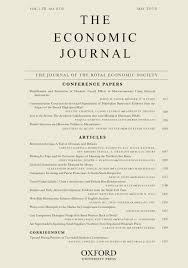
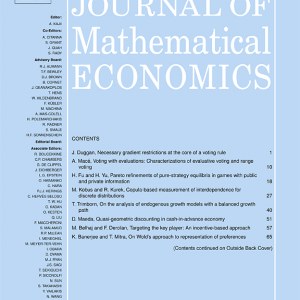
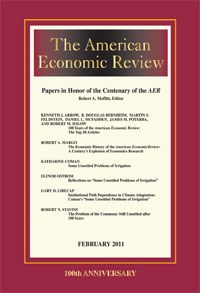
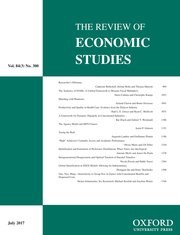
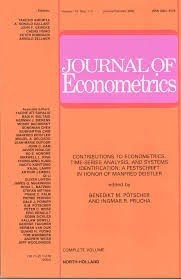
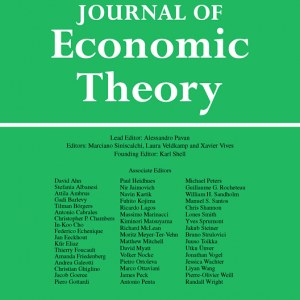
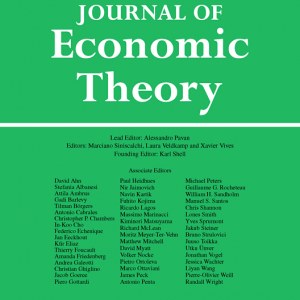
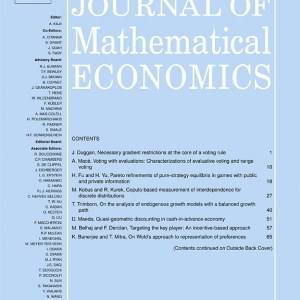
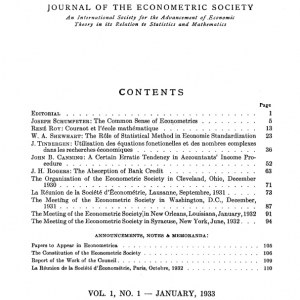
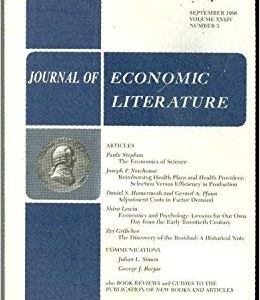
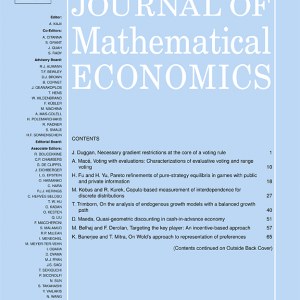
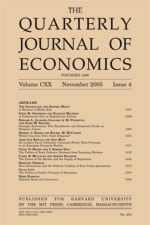
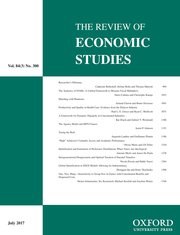
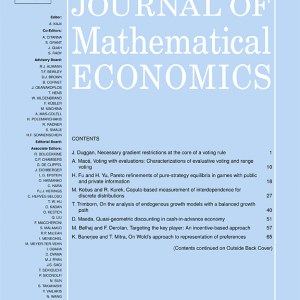
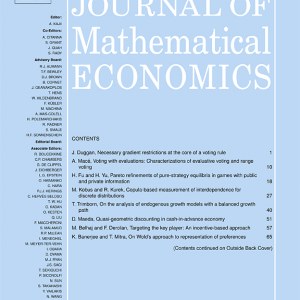
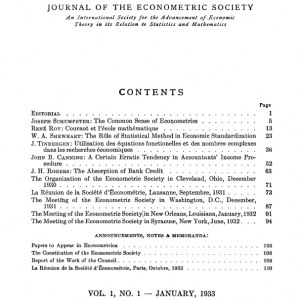
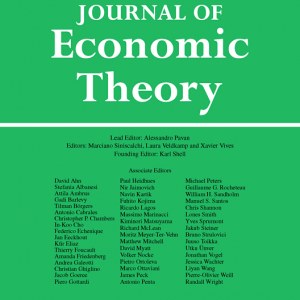
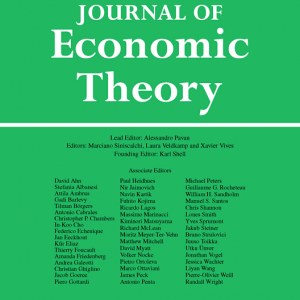
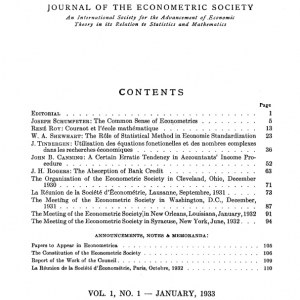
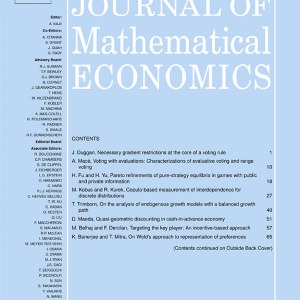
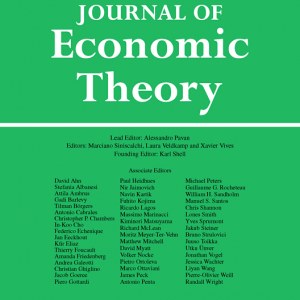
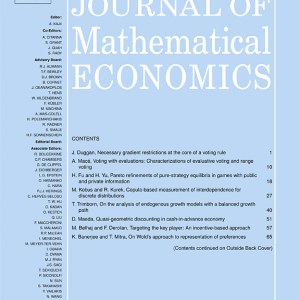
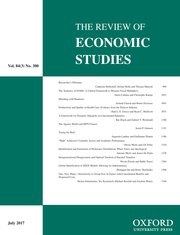
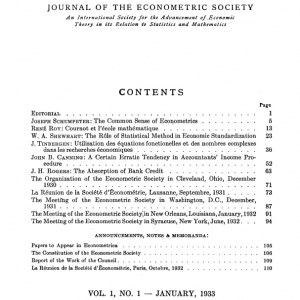

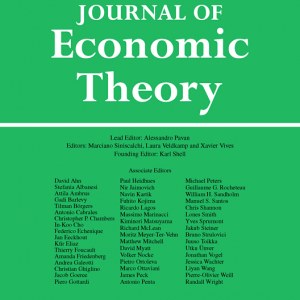
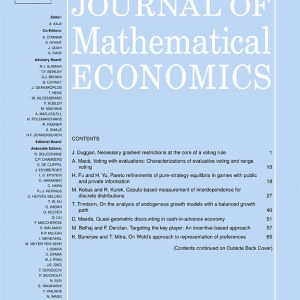
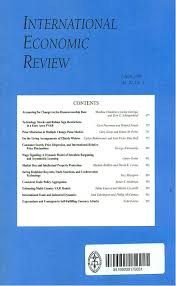
List of publications
Li, C. and Wakker, P. (2024). A Simple and General Axiomatization of Average Utility Maximization for Infinite Streams Journal of Economic Theory, 216:1--10.
Wakker, \PeterP.\ (2023). The correct formula of 1979 prospect theory for multiple outcomes Theory and Decision, 94(2):183--187.
Wakker, P. (2023). A Criticism of Bernheim \& Sprenger’s (2020) Tests of Rank Dependence Journal of Behavioral and Experimental Economics, 107:1--7.
Wakker, \PeterP.\ (2022). Transforming Ordinal Riskless Utility into Cardinal Risky Utility: A Comment on Chung, Glimcher, and Tymula (2019) American Economic Journal: Microeconomics, 14(2):561--565.
Johnson, C., Baillon, A., Bleichrodt, H., Li, Z., \van Dolder\, D. and Wakker, \PeterP.\ (2021). Prince: An improved method for measuring incentivized preferences Journal of Risk and Uncertainty, 62(1):1--28.
Baillon, A., Bleichrodt, H., Li, C. and Wakker, \PeterP.\ (2021). Belief hedges: Measuring ambiguity for all events and all models Journal of Economic Theory, 198:.
Li, C., Turmunkh, U. and Wakker, P. (2020). Social and Strategic Ambiguity versus Betrayal Aversion Games and Economic Behavior, 123:272--287.
Wakker, P. and Abdellaoui, M. (2020). Savage for Dummies and Experts Journal of Economic Theory, 186:.
Bleichrodt, H., Doctor, J., Gao, Y., Li, C., Meeker, D. and Wakker, P. (2020). Resolving Rabin’s Paradox Journal of Risk and Uncertainty, 59(3):239--260.
Li, C., Turmunkh, U. and Wakker, P. (2019). Trust as a Decision under Ambiguity Experimental Economics, 22:51--75.
Wakker, P. and Yang, J. (2019). A Powerful Tool for Analyzing Concave/Convex Utility and Weighting Functions Journal of Economic Theory, 181:143--159.
Baillon, A., Huang, Z., Selim, \.(. and Wakker, P. (2018). Measuring Ambiguity Attitudes for All (Natural) Events Econometrica, 86(5):1839--1858.
Trautmann, S. and Wakker, P. (2018). Making the Anscombe-Aumann Approach to Ambiguity Suitable for Descriptive Applications Journal of Risk and Uncertainty, 56(1):83--116.
Bleichrodt, H., Kothiyal, A., Filko, M. and Wakker, P. (2017). Making Case-Based Decision Theory Directly Observable American Economic Journal: Microeconomics, 9(1):123--151.
Li, Z., Rohde, K. and Wakker, P. (2017). Improving One’s Choices by Putting Oneself in Others’ Shoes—An Experimental Analysis Journal of Risk and Uncertainty, 54(1):1--13.
Attema, A., Bleichrodt, H., Gao, Y., Huang, Z. and Wakker, P. (2016). Measuring Discounting without Measuring Utility American Economic Review, 106(6):1476--1494.
Baillon, A., Bleichrodt, H., Liu, N. and Wakker, P. (2016). Group Decision Rules and Group Rationality under Risk Journal of Risk and Uncertainty, 52(2):99--116.
Bleichrodt, H., Li, C., Moscati, I. and Wakker, P. (2016). Nash Was a First to Axiomatize Expected Utility Theory and Decision, 81:309--312.
Bleichrodt, H., Rohde, K., Spinu, V., Keskin, \.(. and Wakker, P. (2015). Discounted Utility and Present Value—A Close Relation Operations Research, 63(6):1420--1430.
Bleichrodt, H. and Wakker, P. (2015). Regret Theory: A Bold Alternative to the Alternatives Economic Journal, 125:493--532.
Kothiyal, \.(., Spinu, V. and Wakker, P. (2014). An Experimental Test of Prospect Theory for Predicting Choice under Ambiguity Journal of Risk and Uncertainty, 48(1):1--17.
Kothiyal, A., Spinu, V. and Wakker, P. (2014). Average Utility Maximization: A Preference Foundation Operations Research, 62(1):207--218.
Wakker, P., Li, C. and Li, Z. (2014). If Nudge Cannot Be Applied: A Litmus Test of the Readers’ Stance on Paternalism Theory and Decision, 76(3):297--315.
Spinu, V. and Wakker, P. (2013). Expected Utility without Continuity: A Comment on Delbaen, Drapeau, and Kupper (2011) Journal of Mathematical Economics, 49(1):28--30.
Baltussen, G., Post, G., \van den Assem\, M.J. and Wakker, P. (2012). Random Incentive Systems in a Dynamic Choice Experiment Experimental Economics, 15(3):418--443.
Baillon, A., Cabantous, L. and Wakker, P. (2012). Aggregating Imprecise or Conflicting Beliefs: An Experimental Investigation Using Modern Ambiguity Theories Journal of Risk and Uncertainty, 44(2):115--147.
Baillon, A., Driesen, B. and Wakker, P. (2012). Relative Concave Utility for Risk and Ambiguity Games and Economic Behavior, 75(2):481--489.
Abdellaoui, M., Baillon, A., Placido, L. and Wakker, P. (2011). The Rich Domain of Uncertainty: Source Functions and Their Experimental Implementation. American Economic Review, 101(2):695--723.
Kothiyal, \.(., Spinu, V. and Wakker, P. (2011). Prospect Theory for Continuous Distributions: A Preference Foundation Journal of Risk and Uncertainty, 42(3):195--210.
Wakker, P. (2011). Jaffray's Ideas on Ambiguity Theory and Decision, 71(1):11--22.
Trautmann, S. and Wakker, P. (2010). Process Fairness and Dynamic Consistency Economics Letters, 109(3):187--189.
Offerman, T., Sonnemans, J., \van de Kuilen\, G. and Wakker, P. (2009). A truth serum for non-Bayesians : correcting proper scoring rules for risk attitudes Review of Economic Studies, 76(4):1461--1489.
Bleichrodt, H., Rohde, K. and Wakker, P. (2009). Non-Hyperbolic Time Inconsistency Games and Economic Behavior, 66(1):27--38.
Trautmann, S., Vieider, F. and Wakker, P. (2008). Causes of Ambiguity Aversion: Known versus Unknown Preferences Journal of Risk and Uncertainty, 36(3):225--243.
Wakker, P. (2008). Explaining the Characteristics of the Power (CRRA) Utility Family Health Economics, 17(12):1329--1344.
Abdellaoui, M., Barrios, C. and Wakker, P. (2007). Reconciling Introspective Utility with Revealed Preference: Experimental Arguments Based on Prospect Theory. Journal of Econometrics, 138(1):336--378.
Diecidue, E., Wakker, P. and Zeelenberg, M. (2007). Eliciting Decision Weights by Adapting de Finetti's Betting-Odds Methods to Prospect Theory Journal of Risk and Uncertainty, 34:179--199.
Kobberling, V., Schwieren, C. and Wakker, P. (2007). Prospect-Theory's Diminishing Sensitivity versus Economics' Intrinsic Utility of Money: How the Introduction of the of the Euro Can Be Used to Disentagle the Two Empirically Theory and Decision, 63(3):205--231.
\van de Kuilen\, G. and Wakker, P. (2006). Learning in the Allais Paradox Journal of Risk and Uncertainty, 33:155--164.
Abdellaoui, M. and Wakker, P. (2005). The Likelihood Method for Decision under Uncertainty Theory and Decision, 58:3--76.
Kobberling, V. and Wakker, P. (2005). An Index of Loss Aversion Journal of Economic Theory, 122:119--131.
Wakker, P. (2005). Decision-Foundations for Properties of Nonadditive Measures for General State Spaces or for General Outcome Spaces Games and Economic Behavior, 50:107--125.
Diecidue, E., Schmidt, U. and Wakker, P. (2004). The Utility of Gambling Reconsidered Journal of Risk and Uncertainty, 29:241--259.
Kobberling, V. and Wakker, P. (2004). A Simple Tool for Qualitatively Testing, Quantitatively Measuring, and Normatively Justifying Savage's Subjective Expected Utility Journal of Risk and Uncertainty, 28:135--145.
Kobberling, V. and Wakker, P. (2003). Preference Foundations for Nonexpected Utility: A Generalized and Simplified Technique Mathematics of Operations Research, 28:395--423.
Diecidue, E. and Wakker, P. (2002). Dutch Books: Avoiding Strategic and Dynamic Complications, and a Comonotonic Extension Mathematical Social Sciences, 43:135--149.
Gilboa, I., Schmeidler, D. and Wakker, P. (2002). Utility in Case-Based Decision Theory Journal of Economic Theory, 105:483--502.
Wakker, P. and Zank, H. (2002). A Simple Preference-Foundation of Cumulative Prospect Theory with Power Utility European Economic Review, 46:1253--1271.
\De Waegenaere\, A. and Wakker, P. (2001). Nonmonotonic Choquet Integrals Journal of Mathematical Economics, 36:45--60.
Diecidue, E. and Wakker, P. (2001). On the Intuition of Rank-Dependent Utility Journal of Risk and Uncertainty, 23:281--298.
Wakker, P. (2001). Testing and Characterizing Properties of Nonadditive Measures through Violations of the Sure-Thing Principle Econometrica, 69:1039--1059.
Sarin, R. and Wakker, P. (2000). Cumulative Dominance and Probabilistic Sophistication Mathematical Social Sciences, 40:191--196.
Wakker, P. (2000). Book Review Journal of Economic Literature, 38:638--639.
Wakker, P. (2000). Uncertainty Aversion: A Discussion of Critical Issues in Health Economics Health Economics, 9:261--263.
Chateauneuf, A. and Wakker, P. (1999). An Axiomatization of Cumulative Prospect Theory for Decision under Risk Journal of Risk and Uncertainty, 18:137--145.
Wakker, P. and Zank, H. (1999). A Unified Derivation of Classical Subjective Expected Utility Models through Cardinal Utility Journal of Mathematical Economics, 32:1--19.
Wakker, P. and Zank, H. (1999). State Dependent Expected Utility for Savage's State Space Mathematics of Operations Research, 24:8--34.
Sarin, R. and Wakker, P. (1998). Dynamic Choice and Nonexpected Utility Journal of Risk and Uncertainty, 17:87--119.
Sarin, R. and Wakker, P. (1998). Revealed Likelihood and Knightian Uncertainty Journal of Risk and Uncertainty, 16:223--250.
Bleichrodt, H., Wakker, P. and Johannesson, M. (1997). Characterizing QALYs by Risk Neutrality Journal of Risk and Uncertainty, 15(15):107--114.
Kahneman, D., Wakker, P. and Sarin, R. (1997). Back to Bentham? Explorations of Experienced Utility Quarterly Journal of Economics, 112:375--405.
Sarin, R. and Wakker, P. (1997). A Single-Stage Approach to Anscombe and Aumann's Expected Utility Review of Economic Studies, 64:399--409.
Wakker, P., Thaler, R. and Tversky, A. (1997). Probabilistic Insurance Journal of Risk and Uncertainty, 15:7--28.
Chew, S. and Wakker, P. (1996). The Comonotonic Sure-Thing Principle Journal of Risk and Uncertainty, 12:5--27.
Fennema, H. and Wakker, P. (1996). A Test of Rank-Dependent Utility in the Context of Ambiguity Journal of Risk and Uncertainty, 13:19--35.
Miyamoto, J. and Wakker, P. (1996). Multiattribute Utility Theory without Expected Utility Foundations Operations Research, 44:313--326.
Peters, H. and Wakker, P. (1996). Cycle-Preserving Extension of Demand Functions to New Commodities Journal of Mathematical Economics, 25:281--290.
Wakker, P. (1996). The Sure-Thing Principle and the Comonotonic Sure-Thing Principle: An Axiomatic Analysis Journal of Mathematical Economics, 25:213--227.
Tversky, A. and Wakker, P. (1995). Risk Attitudes and Decision Weights Econometrica, 63:1255--1280.
Wakker, P. and Klaassen, M. (1995). Confidence Intervals for Cost/Effectiveness Ratios Health Economics, 4:373--381.
Maas, \.(., Bezembinder, T. and Wakker, P. (1995). On Solving Intransitivities in Repeated Pairwise Choices Mathematical Social Sciences, 29:83--101.
Peters, H. and Wakker, P. (1994). WARP Does not Imply SARP for More Than Two Commodities Journal of Economic Theory, 62:152--160.
Quiggin, J. and Wakker, P. (1994). The Axiomatic Basis of Anticipated Utility; A Clarification Journal of Economic Theory, 64:486--499.
Sarin, R. and Wakker, P. (1994). A General Result for Quantifying Beliefs Econometrica, 62:683--685.
Wakker, P., Erev, \.(. and Weber, E. (1994). Comonotonic Independence: The Critical Test between Classical and Rank-Dependent Utility Theories Journal of Risk and Uncertainty, 9:195--230.
Wakker, P. (1994). Separating Marginal Utility and Probabilistic Risk Aversion Theory and Decision, 36:1--44.
Chateauneuf, A. and Wakker, P. (1993). From Local to Global Additive Representation Journal of Mathematical Economics, 22:523--545.
Chew, S., Epstein, L. and Wakker, P. (1993). A Unifying Approach to Axiomatic Non-Expected Utility Theories: Correction and Comment Journal of Economic Theory, 59:183--188.
Jaffray, J. and Wakker, P. (1993). Decision Making with Belief Functions: Compatibility and Incompatibility with the Sure-Thing Principle Journal of Risk and Uncertainty, 7:255--271.
Wakker, P. (1993). Additive Representations on Rank-Ordered Sets II. The Topological Approach Journal of Mathematical Economics, 22:1--26.
Wakker, P. and Tversky, A. (1993). An Axiomatization of Cumulative Prospect Theory Journal of Risk and Uncertainty, 7:147--176.
Wakker, P. (1993). Clarification of some Mathematical Misunderstandings about Savage's Foundations of Statistics, 1954 Mathematical Social Sciences, 25:199--202.
Wakker, P. (1993). Counterexamples to Segal's Measure Representation Theorem Journal of Risk and Uncertainty, 6:91--98.
Wakker, P. (1993). Savage's Axioms Usually Imply Violation of Strict Stochastic Dominance Review of Economic Studies, 60:487--493.
Wakker, P. (1993). Unbounded Utility for Savage's Foundations of Statistics, and other Models Mathematics of Operations Research, 18:446--485.
Sarin, R. and Wakker, P. (1992). A Simple Axiomatization of Nonadditive Expected Utility Econometrica, 60:1255--1272.
Wakker, P. (1992). Characterizing Stochastically Monotone Functions by Multi-Attribute Utility Theory Economic Theory, 2:565--566.
Peters, H. and Wakker, P. (1991). Independence of Irrelevant Alternatives and Revealed Group Preferences Econometrica, 59:1787--1801.
Wakker, P. (1990). Characterizing Optimism and Pessimism Directly hrough Comonotonicity Journal of Economic Theory, 52:453--463.
Wakker, P. (1990). Under Stochastic Dominance Choquet-Expected Utility and Anticipated Utility are Identical Theory and Decision, 29:119--132.
Wakker, P. (1989). Continuous Subjective Expected Utility with Nonadditive Probabilities Journal of Mathematical Economics, 18:1--27.
Wakker, P. (1988). Continuity of Preference Relations for Separable Topologies International Economic Review, 29:105--110.
Wakker, P. (1988). Derived Strength of Preference Relations on Coordinates Economics Letters, 28:301--306.
Peters, H. and Wakker, P. (1987). Convex Functions on Non-Convex Domains Economics Letters, 22:251--255.
Wakker, P. (1987). Subjective Probabilities for State-Dependent Continuous Utility Mathematical Social Sciences, 14:289--298.
Wakker, P. (1986). The Repetitions Approach to Characterize Cardinal Utility Theory and Decision, 20:33--40.
\de Koster\, R., Peters, H., Tijs, S. and Wakker, P. (1983). Risk sensitivity, independence of irrelevant alternatives and continuity of bargaining solutions Mathematical Social Sciences, 4(3):295--300.
Wakker, P. (1981). Agreeing Probability Measures for Comparative Probability Structures Annals of Statistics, 9:658--662.